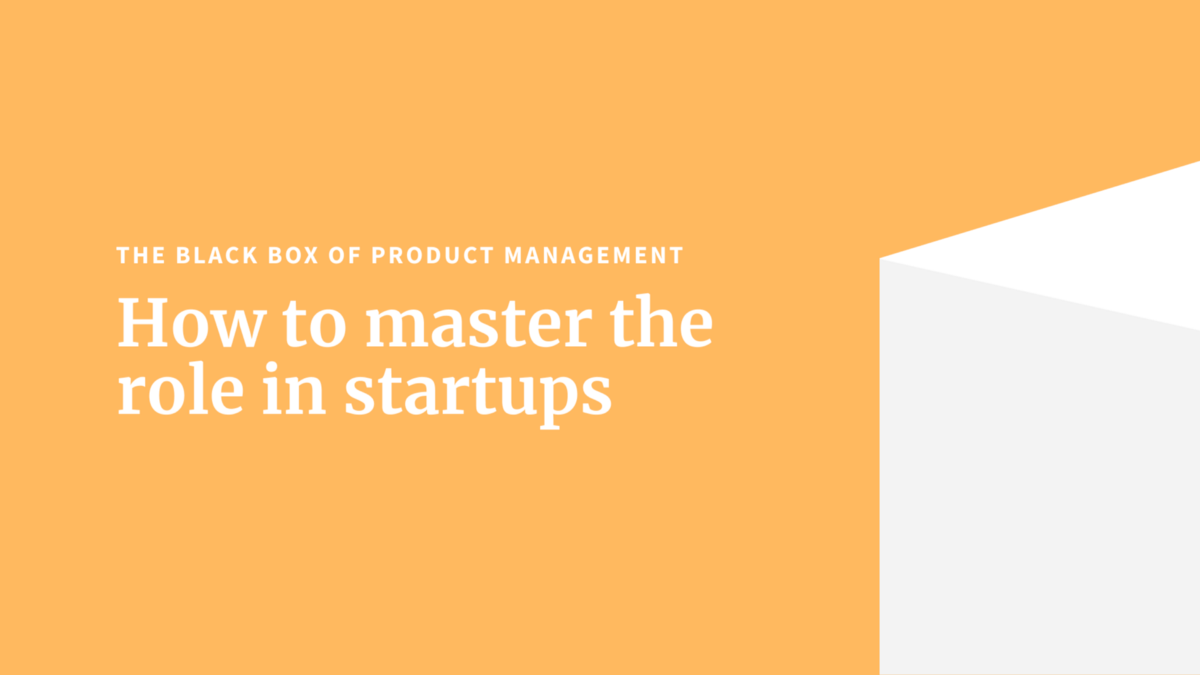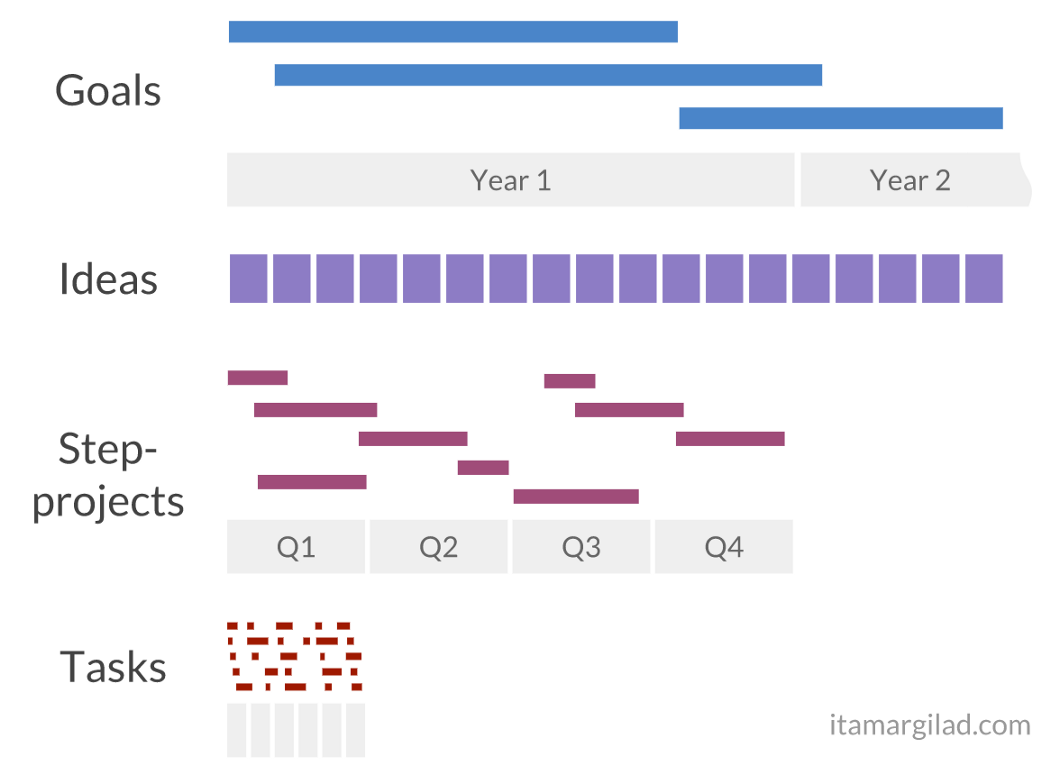Maria 01, Building 5, entrance B
Lapinlahdenkatu 16, 00180 Helsinki
Making history? lets@maki.vc
Press inquiries: press@maki.vc
Blog | Feb 4, 2021
 WRITTEN BY Paavo Räisänen
WRITTEN BY Paavo Räisänen

Product management is one of the most critical parts of scaling an early-stage startup. Why else would it usually be the responsibility of the CEO until the first product manager joins the team? PMs work in the intersection between understanding customers, technology, and user desires, which makes the role so versatile that one-size-fits-all answers are nearly impossible to come by. But how to be visionary, analytical, and practical while simultaneously being in continuous interaction with a large pool of stakeholders? I asked three professionals from our portfolio to share their insights on how to excel as PM.
In 2016, before entering the world of VC, I moved from strategy and business development roles to product management. To be honest, I didn’t really have a clue what to do. Because of my background, I immediately started to dig into the market: understanding customers and competitors better in order to form an opinion about what types of products, pricing, and business models would work. I focused on understanding customer business cases and creating ideas for product packaging and pricing. And based on those insights, we developed a prioritized roadmap for R&D.
This was my business developer-like approach to product management. Some PMs are really good at taking a detailed view of the product, analyzing the customers’ behavior with the product, and initiating practical improvements that can make a huge impact for customer experience.
In my current role, I have seen many professional PMs, which has helped me realize that there is no one perfect way to be a product manager. But there are certain traits and skills that no doubt are useful, according to Harvard Business Review. Among other competencies, HBR states great PMs conduct customer interviews and user testing and are skilled in relationship management, as PMs need to be as close as possible to their customers to maintain a tight relationship with them. This way PMs can gain a lot of insights, learnings, and feedback, and get a much deeper understanding of the customers’ problems.
The CEO is the first PM in many startups. They often have a big vision and start driving the organization towards it without much analysis. That is why it’s important to have a person who is able to take a more holistic view both on product management and the team early on. PMs are visionaries whose main responsibility is to protect, communicate, and mobilize the product vision in a startup.
According to Udi Miron, the VP of Product at Ultimate.ai, a customer service automation platform already used by 1M+ people, this starts by stepping away from building custom-hacks to customers to a more comprehensive and scalable product view and vision. Custom-hacks are a common pitfall and Sigve Søråsen, co-founder and CPO at AI platform Strise, reveals that they even used to have separate value propositions for internal use and customers, which did not work out. They soon realized it was not sustainable and decided to align the internal and external value proposition for a more united vision.
“I think the most important thing to realize as a PM is that even if you’re right on the product vision you might be wrong about many other things regarding the product,” says Søråsen. This lets you test and experiment without the risk of losing clarity of the vision for your product.
And it’s not enough for the PM to understand the product vision, they should also be able to communicate it throughout the organization.
Søråsen stresses that “You are Strise, make decisions” is one of their core values and it is used for the rest of the team to motivate them to embrace the product vision. Each week at Strise they celebrate good decisions, which has led to a positive cycle where people crave more and more information about the product vision to make better decisions.
Each PM I talked to stressed the importance of being close to their customers and having discussions that go beyond specific features to understanding the product more comprehensively from the customers’ perspective and “to feel their pain”.
To keep a close customer — PM relationship, Ultimate.ai’s Miron vouches for the importance of the product team being available and approachable for customers. He advises three simple but effective ways they do this:
And of course, in a product-driven startup, you need to prioritize the ability to grasp your product and technology when hiring to any role. Strise’s Søråsen notes that product management professionals too often lack the customer understanding side, even though it’s one of the key characteristics to look at in PMs.
The product team works in close collaboration with several other functions such as sales and R&D. The ultimate stress test for PM’s ability to communicate the product vision is often the smoothness of this collaboration. “I hardly make any product decisions myself, they are done by sales and tech in our weekly meetings. I have a veto right but I have never used it. You don’t need to use it if you have managed to communicate your product vision well,” Strise’s Søråsen says.
The right to veto is there for a reason: the sales team is doing their job constantly trying to sell something, and it is important to know when to say no, Ultimate.ai’s Miron reminds. “But when we do decide to invest in a new feature that is being requested by a client, we try to have product team members present in the customer meetings,” he adds.
So it’s always a balance of saying yes or no. Miron highlights that internal teams are a great source of inspiration: “our customer success team members are our superusers who give us important insights and feedback daily. We also work closely with our small research team that comes up with crazy experimental ideas that we test.”
Reaching internal alignment requires regular, well-structured meetings. Here’s how Strise does it:
“We have two recurring meetings we call the loop between tech, product, and sales — a one-hour weekly and a 30-minute biweekly. The agenda is two-fold: first, what kind of features are we releasing, and second, what kind of quick wins we can do for the customer in the proof of concept phase. We work in two-week releasing cycles and are always super detailed on the upcoming two weeks and more generic on the next four.”
The Nordic fintech house Enfuce’s Venla Pouru, who is responsible for their Open Banking offering, agrees that product management has to be in continuous and smooth interaction with all functions of a fast growing company, whether it’s marketing, sales, engineering, or customer service. She underlines that to achieve this you should work on clear communications materials: use case descriptions, offering packages and for instance proof points on product performance — these are all important for communications to work both ways between different functions.
Is it clear within your company who is responsible for pricing and business models, competitor battle cards, product marketing materials, and training materials for the salespeople?
Depending on the business, these actions should be taken care of by either the sales, marketing, or — you guessed it — product management team. If the bridge between tech and sales isn’t properly built and the aforementioned tasks aren’t on someone’s plate, the complete ownership of the product most likely isn’t under anyone’s control. This leads to a risk of sales selling each product as custom which means too many feature requirements for product management.
Product roadmap is probably the most common word people associate with product management. In short, a product roadmap should define your product strategy. However, Ultimate.ai’s Miron reminds us that roadmaps are often created for the board, and might cause the team to fixate on a plan that might not be relevant with the ever changing market of fast-paced startups. This leads too often to overestimating the impact and underestimating the costs. Instead, one method he usually recommends, typically for early stage startups, is called GIST (Goals, Ideas, Step-projects, and Tasks).

Each letter stands for different planning horizons that need to be adjusted in different frequencies. By listing and keeping track of your goals, ideas, step-projects, and tasks, you have completed all the core planning your company and team need to do. According to ex-Google PM Itamar Gilad, Goals are typically set for a horizon of one or more years, Ideas are constantly collected and prioritized, Step-projects are defined at the beginning of the quarter, and Tasks are planned in 1–2 week iterations.
However, Enfuce’s Pouru sees a role for product roadmaps, provided that they 1) are built from a customer-value perspective and 2) should fit in a one-pager — otherwise, it becomes too complex and does not serve the purpose. In product-driven tech companies the product roadmap works as a sales tool as well, showcasing customers all the new features they will have access to in the future.
As said at the beginning of this post, there are no one-size-fits-all answers to questions about how to be a great PM, and even sharing the tips of Pouru, Miron, and Søråsen might leave you craving for even more insight on best PM practices. That’s why we gathered a list of some of our favorite resources around the subject so that you can dive even deeper into the secrets of product management.
On general level: INSPIRED, How to create tech products customers love
On product positioning: Zero to one
On understanding customers: Running lean & INSPIRED
On usability: Don’t make me think
Author: Paavo Räisänen is an early-stage VC investor at Maki.vc. Focusing on B2B SaaS and Industrial Solutions. paavo@maki.vc @PaavoRaisanen